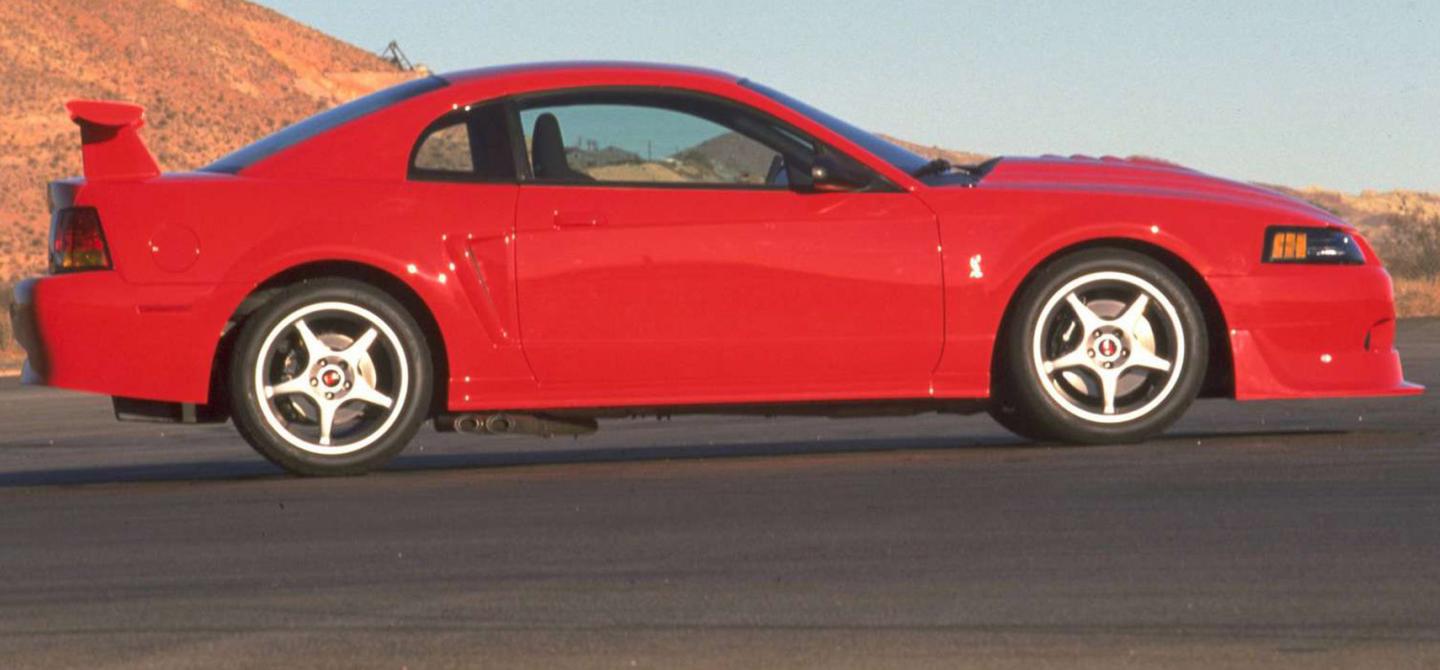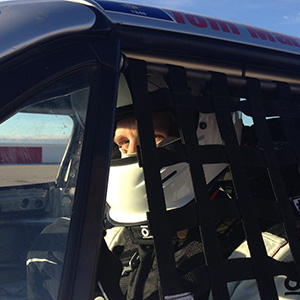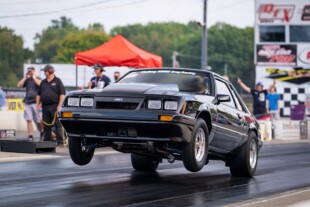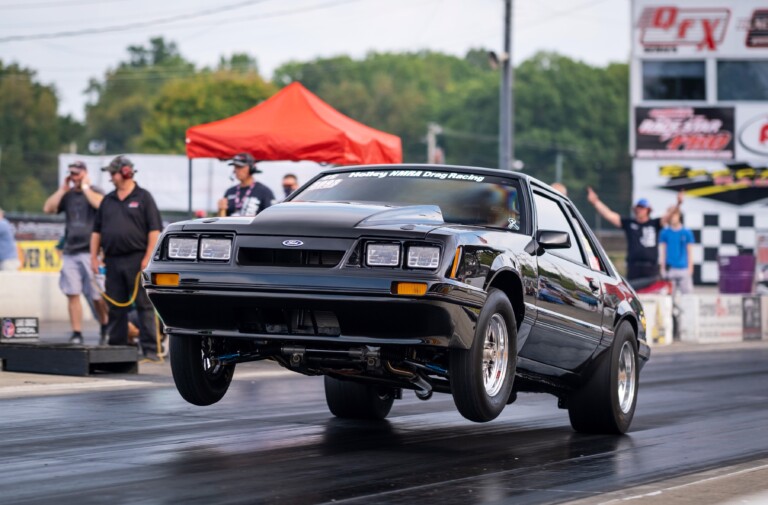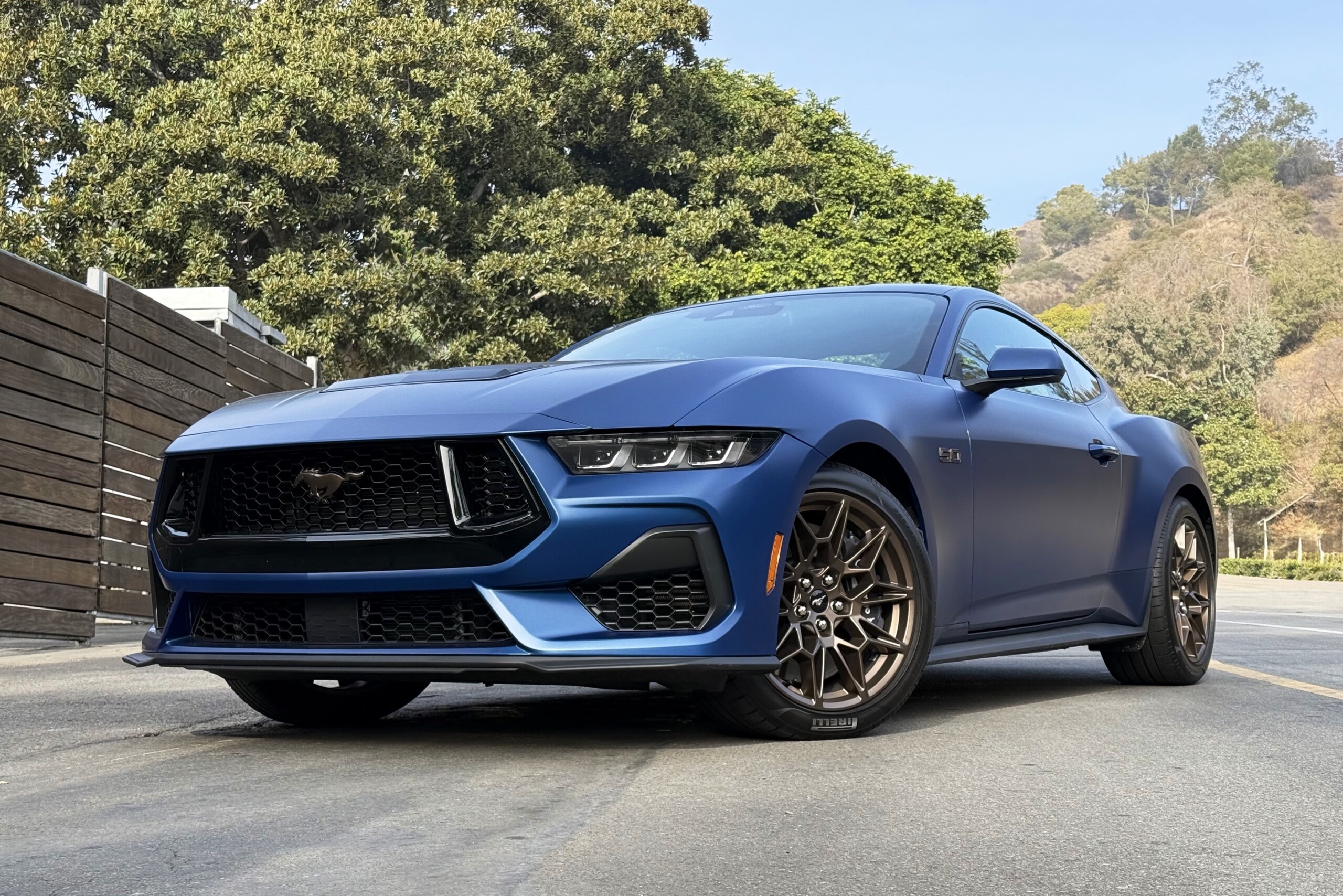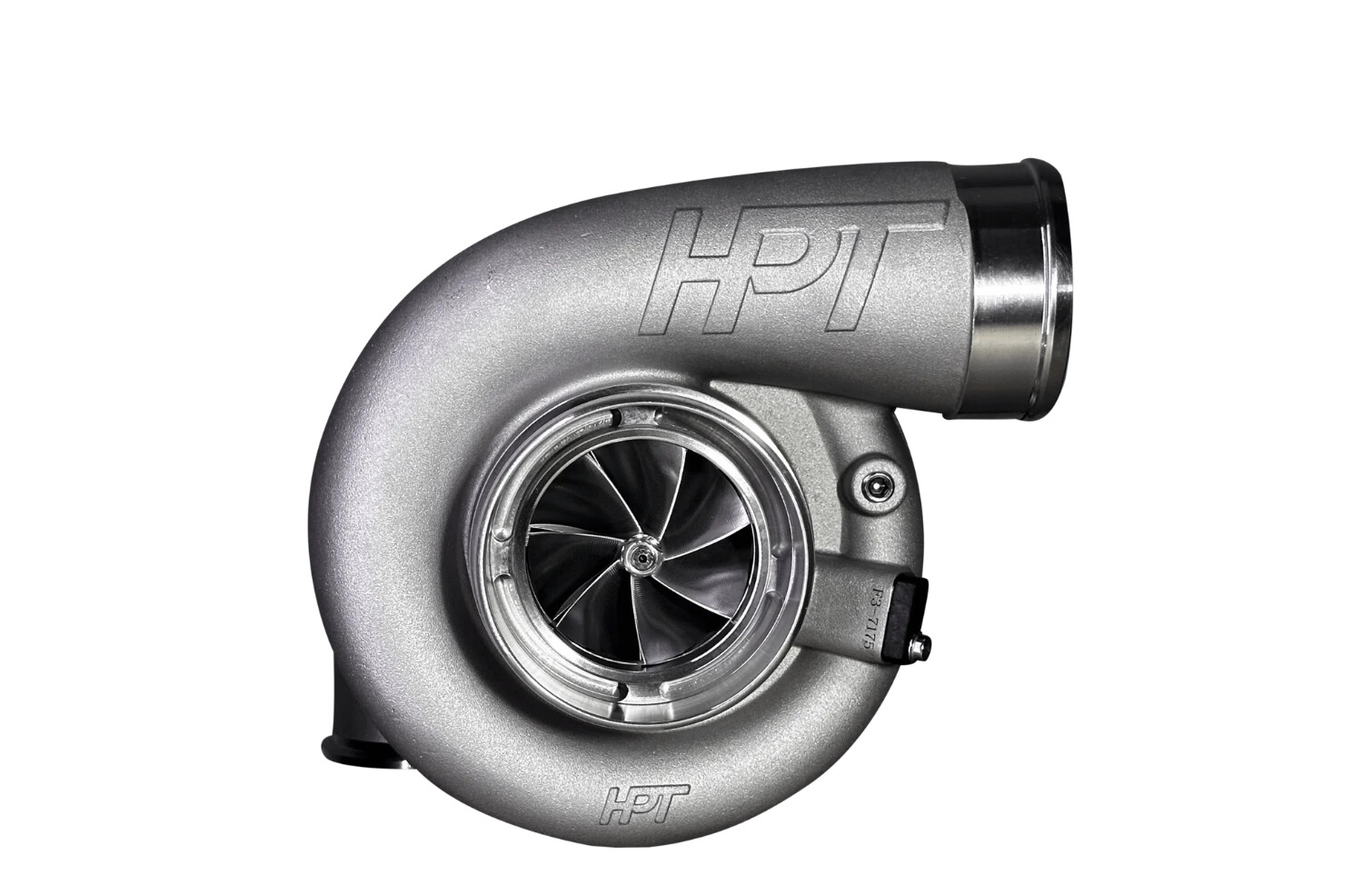Near the close of the 1990s, Ford’s Special Vehicle Team had something to prove. While capability was on the upswing, the 1999 Mustang Cobra had proven to be a misstep for Ford’s performance arm. Officially rated at 320 horsepower, Ford was forced to recall all 5,300 Cobras after dozens of complaints from owners that the cars weren’t making the advertised output.
“We know exactly what happened, and we’re going to make sure that it never happens again,” Tom Scarpello, marketing manager of Ford’s Specialty Vehicle Team, wrote in a letter to owners.
In the wake of that Snafu, the standard Mustang Cobra would sit out the following model year. Though that might have disappointed some potential owners, it also allowed SVT’s new top dog to take center stage. While the standard Mustang Cobra had offered a level performance that was a step above the GT, the 2000 SVT Mustang Cobra R was a different animal entirely.
The 2000 Cobra R’s bulging hood, collection of functional aero pieces, and unique side-exiting exhaust helped the model stand out from any other New Edge-era Mustang model that came before or after it. In an effort to make the car easier to live with on the street, SVT designed a removable front splitter removable by integrating Dzus turnlock fasteners into its design. (Photo Credit: Ford Motor Company)
The Cobra R was designed from the outset as an essentially race-ready, corner-carving street car. Special Vehicle Engineering gathered together a world-class aftermarket hardware from the likes of Bilstein, Eibach, Brembo, Borla, Tremec, and Recaro to create its masterpiece. Though the model’s hard-edge tuning resulted in a less-hospitable road car, the 2000 Mustang Cobra R made one thing clear — Ford’s SVT division wasn’t messing around.
While the standard SVT Mustang Cobra was, to a tangible degree, a warmed over GT model that was tuned to deliver performance and curb appeal above and beyond your garden-variety V8 Mustang while retaining the expected creature comforts and amenities, the Cobra R took a much more comprehensive approach to performance.
The Cobra R’s lack of fog lights serves a functional purpose too, allowing engineers to route air directly onto the front brakes to aid in heat management. Out back, the 7-inch-tall rear wing gives the Cobra R some serious visual presence, while also providing high-speed stability. Since the Borla exhaust system exits in front of the rear tires rather than through cutouts at the bottom of the rear fascia (as was the case with the GT and standard Cobra models), the a V6 model's rear fascia was used.
The fact that the Cobra R was something special could be assessed at a glance. The car’s hunkered down stance – dropped 1.5 inches up front and one inch in the rear versus a standard Cobra with the help of Eibach springs — which complemented the R’s new aggressive front splitter, massive rear wing, and power-dome hood, the latter of which featured heat-extracting gills to keep engine bay temperatures down. Borla supplied the car’s bespoke exhaust system, a quad-tip setup that exited just in front of the rear tires on each side of the car rather than under the rear fascia, as was the case with all other factory Mustangs at that time.
Although the car was a head-turner while at rest, it also had the hardware to back up the beefed-up look. Under the hood, engineers tossed the 4.6-liter V8 used in the GT and standard Cobra, in favor of a hand-built, iron-block 5.4-liter modular V8 with a 6,500-RPM redline courtesy of its free breathing DOHC heads.
SVT tapped some of the best names in the business to help put together the Cobra R’s powerplant. Though it developed the 5.4-liter mill’s forged steel crank in-house, Carillo supplied the engine’s billet-steel connecting rods and forged pistons, Crane Cams brought its expertise to the valvetrain, and K&N developed the Cobra’s 75mm high-volume air intake. (Photo Credit: Mecum)
Said to produce 385 horsepower and 385 lb-ft of torque (and widely rumored to be underrated), the new mill featured unique high-flow cylinder heads, uprated camshafts, a “trumpet-style” intake manifold, shorty headers, and a Bassani X-pipe that led to the Borla exhaust system. The new V8 was paired up with a close-ratio Tremec T-56 six-speed manual gearbox, which sent the grunt to the rear wheels through a 8.8-inch differential with 3.55 gears.
But the Cobra R wasn’t just about straight-line sprints – SVT had tuned this Mustang for the road course rather than the drag strip. The chassis and suspension setup received just as much attention as the powertrain. The aforementioned Eibach springs were paired up with specially-tuned Bilstein dampers to bolster the car’s sure-footedness in the corners. BFGoodrich supplied a set of g-Force KD tires with a custom construction and compound designed specifically for the Cobra R to provide the car with the grip it would require.
The 2000 SVT Mustang Cobra R is a wish list of go-fast hardware for road racers. Both braking capability and thermal management were enhanced significantly from that of the standard Mustang Cobra via Brembo hardware, larger discs, and enhanced cooling strategies. Meanwhile, Eibach springs, Bilstein dampers, and high-durometer bushings lowered and upgraded the suspension. Unique 18-inch, five-spoke aluminum wheels adorned the Cobra R, and a set of specially developed, 265mm-wide BFGoodrich g-Force KD high-performance tires wrapped around them.
A set of four-piston Brembo calipers and 13-inch ventilated discs up front provided stopping power, while single-piston units clamped down on 11.65-inch rear discs. SVT also integrated cooling ducts into the R’s front fascia to ensure proper airflow to the brakes to aid in heat management.
The Cobra R needed all of that braking capability, too. It debuted as the quickest and fastest factory-produced, street-legal Mustang in Ford’s history, sprinting to 60 mph from a standstill in just 4.4 seconds on its way to 12.9-second quarter mile time in Motor Trend’s testing. The publication would also record a 60-0 mph braking distance of just 109 feet, and with Ford’s 170-MPH official top speed for the Cobra R, this top-dog Mustang boasted performance figures that are still impressive by today’s standards, nearly two decades later.
SVT R-Models Of The ’90s
[group_caption caption="" type="2" images="https://www.speednik.com/files/2018/04/2018-04-24_23-21-22_294631.jpg, https://www.speednik.com/files/2018/04/2018-04-24_23-21-13_074943.jpg"]
Though the 2000 Cobra R proved to be the most potent factory Mustang ever built by SVT, it wasn’t the first time that the division had produced an essentially race-ready, road-going version of the Mustang Cobra. Its first foray into hardcore territory with the Mustang dates back to the Fox era with the 1993 Cobra R. Ostensibly a homologation version of the standard Mustang Cobra that year, the enhancements for 1993 Mustang Cobra R focused on handling and weight reduction, with the former provided by Eibach springs, adjustable Koni dampers, additional structural bracing, and larger brakes, while the latter was addressed by removing the rear seat, air conditioning, audio system, and power accessories. Only 107 examples of the ’93 Cobra R were built.
Two years later, the Cobra R would return to the fold. This time around SVT would take a more comprehensive approach with the R-model, replacing the standard Cobra’s 5.0-liter V8 with an SVT-modified version of Ford’s 5.8-liter Windsor V8 tuned to produce 300 horsepower. As with the R models both before and after it, the ’95 Cobra R dropped weight by losing its rear seat, air conditioning, stereo, and any other features deemed unnecessary for performance prowess. Ford built just 250 1995 SVT Mustang Cobra Rs in total.
Rather than spending development money embellishing the Mustang’s interior in an effort to make the Cobra R’s cabin stand out of the rest of the lineup, SVT engineers instead focused on functionality, replacing the standard buckets with Recaro race seats and removing accessories like the air conditioning system, audio system, and even the rear seat — items which were deemed unnecessary in a vehicle as track-focused as the Cobra R. (Photo Credit: Barrett-Jackson, Ford)
But as with the rest of the car, what the Cobra R lacked in creature comforts it made up for with functional capability. Accordingly, the standard front seats were swapped out for custom Recaro buckets with cutouts for racing harnesses and aggressive bolstering to help keep the occupants planted in place during high-speed lateral maneuvering.
Just 300 Cobra Rs were produced in total, all of which were coated in Performance Red paint and outfitted with Dark Charcoal interiors. It was the third and final Cobra R produced by Ford’s SVT division and undoubtedly the most potent of the bunch.
Today these cars are regarded as modern collectables due to their rarity, striking looks, and outright capability, with low-mileage examples changing hands at or above the car’s original $54,995 sticker price.


